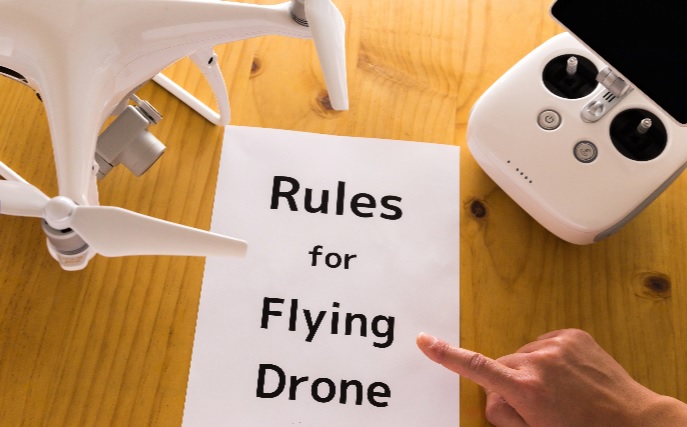Drones have revolutionized how we capture images, survey landscapes, and even deliver packages. However, with this technological leap comes a great responsibility to operate drones safely and responsibly. In this guide, we’ll cover the fundamental drone flying rules that every pilot, from beginners to seasoned enthusiasts, should know to ensure a safe and enjoyable experience.
Section 1: Line of Sight Rule
One of the most critical rules for drone pilots is maintaining a clear line of sight with the aircraft at all times. This means you should be able to see your drone with unaided vision, without relying solely on the camera feed. Flying beyond your line of sight can lead to loss of control and potentially dangerous situations.
Section 2: Maximum Altitude Limit
Respecting altitude restrictions is paramount for safe drone operation. In many countries, including the United States, drones are limited to a maximum altitude of 400 feet (120 meters) above ground level. This rule helps prevent conflicts with manned aircraft and ensures a safe operating environment for all airspace users.
Section 3: Stay Away from Manned Aircraft
Giving way to manned aircraft is a fundamental principle of responsible drone operation. Drones should never interfere with the flight paths of airplanes, helicopters, or other piloted aircraft. Always be aware of your surroundings and yield the right of way to manned vehicles.
Section 4: Avoid Flying Over People and Vehicles
To minimize the risk of injury or property damage, refrain from flying your drone directly over people or moving vehicles. This rule is especially crucial in crowded areas where an unexpected incident could have serious consequences. Maintain a safe distance from individuals and vehicles to ensure their safety.
Section 5: Respect Wildlife and Natural Habitats
Protecting the environment is a shared responsibility. When flying a drone, maintain a safe distance from wildlife and natural habitats. Flying too close can disturb animals and disrupt their natural behavior, which may have negative ecological consequences.
Section 6: No Night Flying (Unless Equipped for It)
In many regions, flying drones at night is prohibited unless your drone is equipped with proper lighting for visibility. Night flying introduces additional challenges and risks, such as reduced visibility and potential disorientation. Always adhere to local regulations regarding nighttime flying to ensure safe operations.
Section 7: Be Mindful of Privacy
Respecting the privacy of individuals is of utmost importance. Avoid capturing images or video of people without their consent, and be cautious when flying near private properties. Maintaining a respectful distance and obtaining proper permissions when necessary demonstrates responsible drone operation.
Section 8: Fly in Controlled Airspace with Permission
If you plan to fly in controlled airspace, which includes areas near airports or other restricted zones, you must obtain the necessary permissions and adhere to any additional regulations that apply. This ensures the safety of all airspace users and prevents potential conflicts with manned aircraft.
Section 9: Emergency Procedures
Being prepared for emergencies is a critical aspect of responsible drone operation. Familiarize yourself with the emergency procedures specific to your drone model, including how to execute a safe emergency landing. Having a plan in place for unexpected situations can help mitigate potential risks.
Conclusion: Elevating Your Drone Experience Responsibly
Mastering these fundamental drone flying rules is not only a legal requirement but also a demonstration of your commitment to safety and responsible piloting. By following these guidelines, you contribute to a positive and respectful drone community, ensuring that the skies remain a safe and enjoyable space for all.
Remember, being a responsible drone pilot is not just about adhering to rules; it’s about upholding a culture of safety and respect for both the technology and the people who share the airspace.

